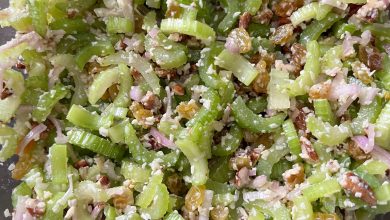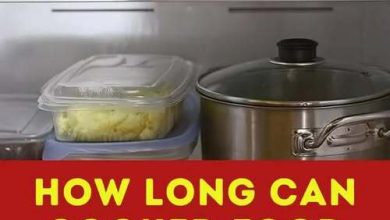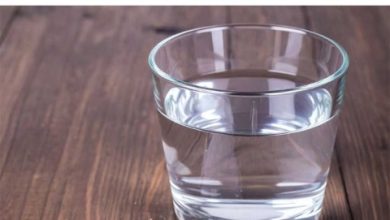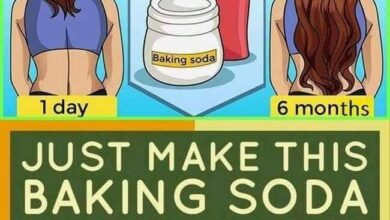Dentists won’t tell you this. Natural ways to remove tartar and do teeth whitening at home
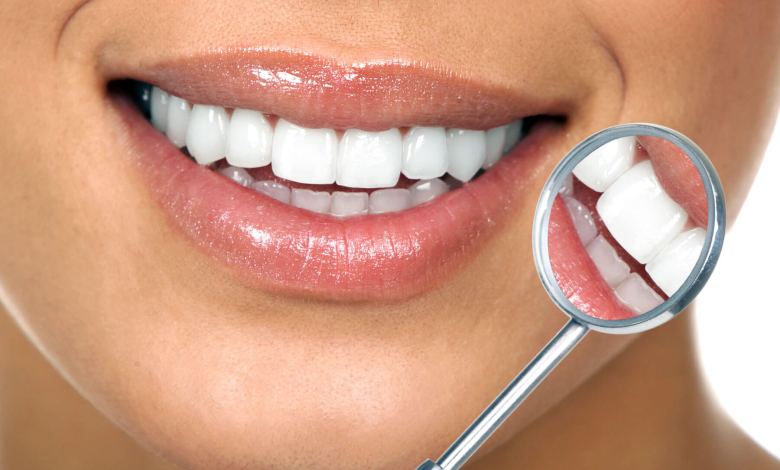
Many of us dream of a brighter, healthier smile, and while regular dental check-ups and professional cleanings are absolutely crucial for maintaining optimal oral health, there are indeed natural methods you can explore right in your own home to help address tartar buildup and brighten your teeth. These natural approaches often involve simple, readily available ingredients and gentle techniques that can be kind to your tooth enamel while still working towards a healthier, more radiant smile. It’s really important to remember that these home remedies are best seen as supporting your professional dental care, not replacing it. Think of them as additional tools in your oral hygiene toolkit! Let’s dive into some safe and effective ways to naturally clean and whiten your teeth.
ADVERTISEMENT
Natural Strategies for Tackling Tartar
Tartar, also known as calculus, is hardened plaque that can form on your teeth. Once it’s there, it generally needs to be removed by a dental professional. However, these methods can help manage plaque, which is the precursor to tartar, and may even help soften existing buildup over time.
ADVERTISEMENT
- Oil Pulling (Coconut or Sesame Oil) 🌱 This ancient Ayurvedic practice has gained popularity for its potential benefits in oral health.
- What It Does: “Oil pulling is an ancient Ayurvedic practice that helps reduce plaque and bacteria in the mouth.” By swishing oil around your mouth, it’s believed to “pull” harmful bacteria and toxins from your teeth and gums.
- How to Do It: Simply swish one to two tablespoons of a high-quality oil like coconut oil, sesame oil, or even sunflower oil in your mouth. Aim for a duration of 15 to 20 minutes. After swishing, “spit out the oil (do not swallow),” as it will contain the bacteria you’ve pulled. Then, “rinse with warm water and brush your teeth as usual.”
- Benefits: Regular oil pulling may help “reduce harmful bacteria,” “prevent plaque buildup,” and potentially “soften tartar over time.”
- Baking Soda + Salt Scrub 🧂 This combination uses common kitchen ingredients for a gentle cleaning action.
- What It Does: Baking soda, a mild abrasive, “neutralizes acids and gently scrubs away surface stains.” When combined with salt, which “acts as a mild abrasive to loosen tartar,” you get a simple yet effective scrubbing agent.
- How to Do It: “Mix 1 teaspoon of baking soda with a pinch of salt.” Dampen your toothbrush, “dip a damp toothbrush into the mixture and gently brush your teeth for 1–2 minutes.” Finish by rinsing “thoroughly with water.”
- Caution: It’s crucial to “use this scrub no more than once a week to avoid enamel wear.” Overuse can be too abrasive for your tooth enamel.
- Apple Cider Vinegar Rinse 🍎 Apple cider vinegar (ACV) is known for its many uses, including its potential role in oral care.
- What It Does: The active component, “the acetic acid in apple cider vinegar (ACV) helps break down tartar and kill bacteria.”
- How to Do It: To prepare a rinse, “dilute 1 tablespoon of ACV in a cup of water.” Swish this diluted solution “in your mouth for 1–2 minutes, then spit it out.” Always remember to “rinse your mouth with plain water and brush your teeth afterward.”
- Caution: Due to its acidic nature, “limit use to 1–2 times a week, as prolonged exposure to acid can weaken enamel.” Moderation is key here.
- Fruits with Natural Enzymes (Strawberries + Lemon) 🍓🍋 Certain fruits contain natural acids and enzymes that can assist with cleaning and brightening.
- What It Does: “Strawberries contain malic acid and vitamin C, which help break down tartar and brighten teeth.” The addition of “lemon juice adds a whitening boost” to this fruity combination.
- How to Do It: “Mash 2–3 strawberries and mix with a few drops of lemon juice.” You can then “apply the mixture to your teeth using a toothbrush or your fingers.” Leave it on for about “5 minutes, then rinse thoroughly and brush your teeth.”
- Caution: Be mindful not to overuse this method. “Avoid overuse, as citric acid can erode enamel if used excessively.”
Natural Approaches to Whiten Teeth
While professional teeth whitening offers the most dramatic results, these natural methods can help reduce surface stains and contribute to a brighter appearance over time.
ADVERTISEMENT
- Activated Charcoal 🖤 This black powder has a unique ability to absorb impurities.
- What It Does: “Activated charcoal absorbs toxins and stains, leaving teeth looking brighter.” Its porous nature helps it bind to surface stains.
- How to Do It: Simply “dip a wet toothbrush into powdered activated charcoal.” Then, “brush your teeth gently for 1–2 minutes, focusing on stained areas.” It’s important to “rinse thoroughly until all residue is gone.”
- Caution: “Use no more than 1–2 times a week to avoid abrasion.” While effective, excessive use could potentially be abrasive to enamel.
- Hydrogen Peroxide Rinse 💧 Hydrogen peroxide is a common antiseptic with mild bleaching properties.
- What It Does: “Hydrogen peroxide is a natural bleaching agent that can lighten surface stains.” When diluted, it can safely be used as a mouth rinse.
- How to Do It: “Mix equal parts 3% hydrogen peroxide and water.” “Swish the solution in your mouth for 30 seconds to 1 minute, then spit it out.” Always “rinse with water and brush your teeth.”
- Caution: “Use sparingly (once a week), as overuse can irritate gums and weaken enamel.” If you experience any sensitivity, discontinue use.
- Orange Peels 🍊 An often-overlooked part of this popular fruit can be surprisingly useful.
- What It Does: “Orange peels contain d-limonene, a compound that helps dissolve surface stains.” This natural chemical can gently work on discoloration.
- How to Do It: “Rub the white side of an orange peel directly on your teeth for 1–2 minutes.” After rubbing, “rinse thoroughly and brush your teeth afterward.”
- Caution: “Avoid using the inner pith, as it can be too abrasive.” Stick to the softer, white inner part of the peel.
- Coconut Oil Toothpaste 🥥 Leveraging the benefits of coconut oil in a paste form.
- What It Does: “Coconut oil has antibacterial properties and helps polish teeth without harsh chemicals.” When combined with baking soda, it creates a gentle cleaning and polishing agent.
- How to Do It: “Mix 2 tablespoons of coconut oil with 1 teaspoon of baking soda.” Use this homemade paste to “brush your teeth for 2–3 minutes.” Finish by rinsing “thoroughly with water.”
- Benefits: This method “whitens teeth gradually while promoting gum health.”
Essential Additional Tips for a Healthy Smile
Beyond specific natural remedies, foundational oral hygiene practices are vital for long-term dental health.
- Maintain Proper Oral Hygiene: The basics are always the most important. “Brush twice daily with fluoride toothpaste and floss at least once a day to prevent tartar buildup.” Consider using “an electric toothbrush for better plaque removal” as it can often reach areas a manual brush might miss.
- Stay Hydrated: Simple hydration plays a significant role. “Drinking water helps wash away food particles and bacteria, reducing plaque formation.” It also helps maintain saliva production, which is your body’s natural defense against decay.
- Eat Crunchy Fruits and Veggies: Nature’s own toothbrushes! “Apples, carrots, and celery act as natural “toothbrushes,” scrubbing away debris and stimulating saliva production.” These foods can help clean your teeth as you chew them.
- Avoid Staining Foods and Drinks: What you consume can impact your teeth’s color. “Limit coffee, tea, red wine, and sugary snacks, which can discolor teeth and promote plaque buildup.” Reducing these can help maintain a brighter smile and prevent new stains from forming.
- Visit Your Dentist Regularly: This cannot be stressed enough. “Professional cleanings are the most effective way to remove tartar and maintain oral health.” Your dentist and hygienist can address issues that home remedies cannot and provide tailored advice for your specific needs.
Concluding Thoughts
“While these natural remedies can help improve your oral hygiene and brighten your smile, they should complement—not replace—regular dental care.” It’s essential to be attentive to your body; “Always listen to your body and stop any method that causes sensitivity or discomfort.” By thoughtfully combining these natural tips with consistent, good oral hygiene habits and routine professional dental check-ups, “you’ll be on your way to a healthier, whiter smile—one natural step at a time!” Remember, consistency and caution are your best friends on this journey to a brighter, healthier smile.
What natural remedies have you tried for your oral health, and what was your experience?
